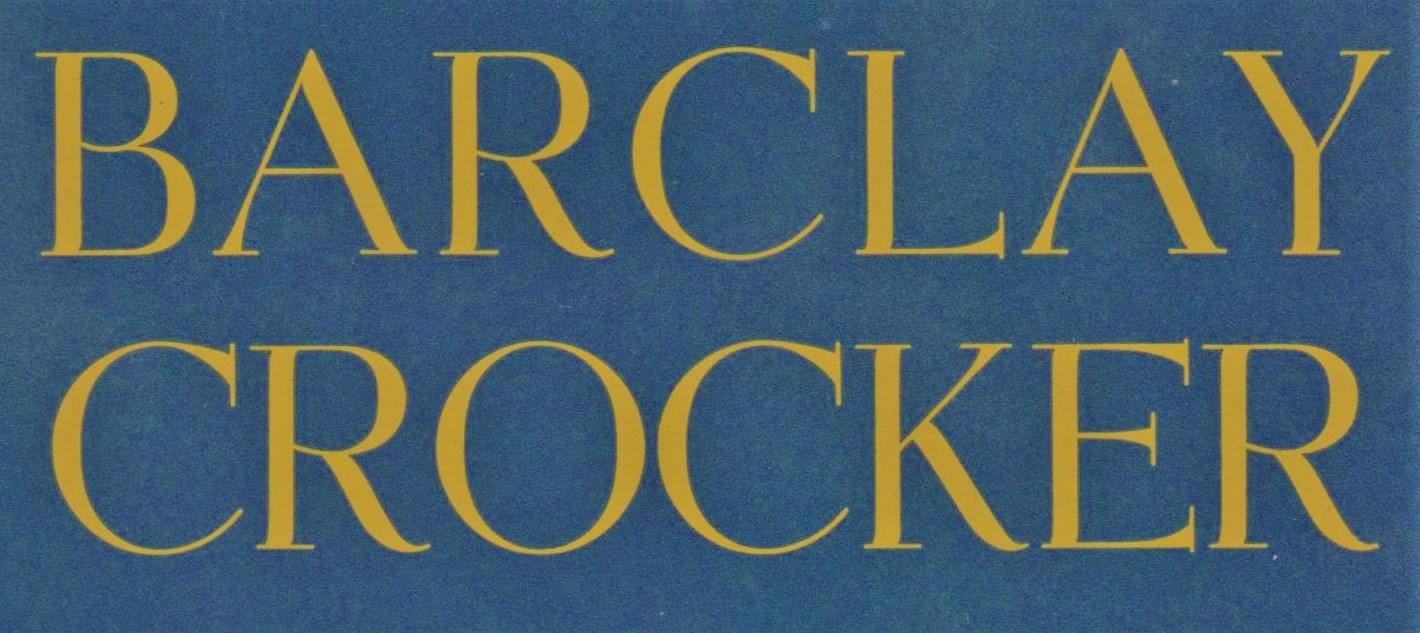In order to use this feature, you need register and become a member.
Already a member? Login Register hereBarclay Crocker - USA
#357 Barclay Crocker Prerecorded TapesSubmit New Tape
4-Track Tapes
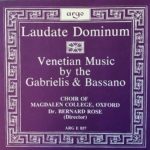 Gabrielis & Bassano Venetian Music-, 7.5ips - 4 Track Stereo
Gabrielis & Bassano Venetian Music-, 7.5ips - 4 Track Stereo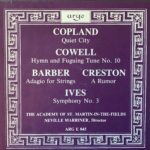 Copland Quiet City-, 7.5ips - 4 Track Stereo
Copland Quiet City-, 7.5ips - 4 Track Stereo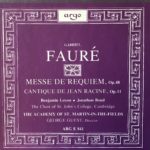 Faure Messe De Requiem-, 7.5ips - 4 Track Stereo
Faure Messe De Requiem-, 7.5ips - 4 Track Stereo Vivaldi Concerti for Wind and Strings, 7.5ips - 4 Track Stereo
Vivaldi Concerti for Wind and Strings, 7.5ips - 4 Track Stereo Bach J.S Concertos-, 7.5ips - 4 Track Stereo
Bach J.S Concertos-, 7.5ips - 4 Track Stereo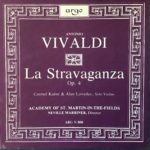 Vivaldi La Stravaganza, 7.5ips - 4 Track Stereo
Vivaldi La Stravaganza, 7.5ips - 4 Track Stereo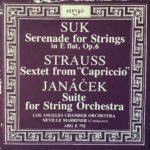 Suk, Strauss, Janacek Serenade for Strings, Sextet from Capriccio, Suite for String Orch.-, 7.5ips - 4 Track Stereo
Suk, Strauss, Janacek Serenade for Strings, Sextet from Capriccio, Suite for String Orch.-, 7.5ips - 4 Track Stereo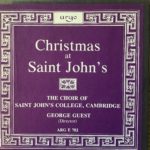 Various Christmas Music, 7.5ips - 4 Track Stereo
Various Christmas Music, 7.5ips - 4 Track Stereo Mozart Violin Concerto in G Major, Concertone in C Major for two Violins and Orchestra, 7.5ips - 4 Track Stereo
Mozart Violin Concerto in G Major, Concertone in C Major for two Violins and Orchestra, 7.5ips - 4 Track Stereo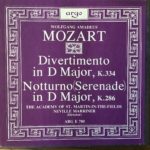 Mozart Divertimento in D Major, Notturno in D Major-, 7.5ips - 4 Track Stereo
Mozart Divertimento in D Major, Notturno in D Major-, 7.5ips - 4 Track Stereo Mozart Eine Kleine Nachtmusik,Sym.#32,Sinfonia Concertante for Violin & Viola-, 7.5ips - 4 Track Stereo
Mozart Eine Kleine Nachtmusik,Sym.#32,Sinfonia Concertante for Violin & Viola-, 7.5ips - 4 Track Stereo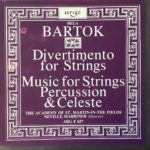 Bartok Divertmento for Strings, Music for Strings Percussion and Celeste-, 7.5ips - 4 Track Stereo
Bartok Divertmento for Strings, Music for Strings Percussion and Celeste-, 7.5ips - 4 Track Stereo Vivaldi The Four Seasons-, 7.5ips - 4 Track Stereo
Vivaldi The Four Seasons-, 7.5ips - 4 Track Stereo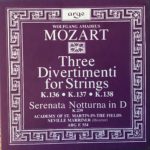 Mozart Three Divertimenti for Strings, 7.5ips - 4 Track Stereo
Mozart Three Divertimenti for Strings, 7.5ips - 4 Track Stereo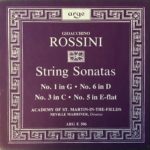 Rossini String Sonatas -, 7.5ips - 4 Track Stereo
Rossini String Sonatas -, 7.5ips - 4 Track Stereo Haydn Trumpet and Horn Concertos , 7.5ips - 4 Track Stereo
Haydn Trumpet and Horn Concertos , 7.5ips - 4 Track Stereo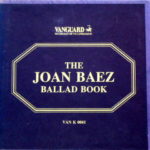 The Joan Baez Ballad Book, 7.5ips - 4 Track Stereo
The Joan Baez Ballad Book, 7.5ips - 4 Track Stereo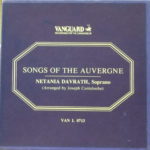 Songs of the Auvergne, 7.5ips - 4 Track Stereo
Songs of the Auvergne, 7.5ips - 4 Track Stereo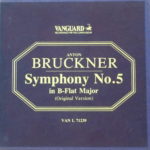 Bruckner Symphony #5 (Original Version), 7.5ips - 4 Track Stereo
Bruckner Symphony #5 (Original Version), 7.5ips - 4 Track Stereo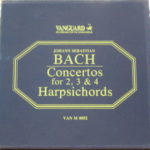 Bach Concertos for Two, Three and Four Harpsichords, 7.5ips - 4 Track Stereo
Bach Concertos for Two, Three and Four Harpsichords, 7.5ips - 4 Track Stereo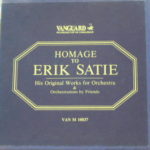 Satie, Erik Orginal works for Orchestra-, 7.5ips - 4 Track Stereo
Satie, Erik Orginal works for Orchestra-, 7.5ips - 4 Track Stereo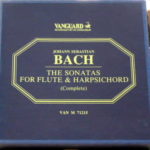 Bach The Sonatas for Flute & Harpsichord (Complete), 7.5ips - 4 Track Stereo
Bach The Sonatas for Flute & Harpsichord (Complete), 7.5ips - 4 Track Stereo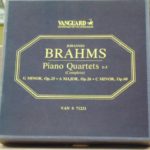 Brahms Piano quartets #1-3 (Complete), 7.5ips - 4 Track Stereo
Brahms Piano quartets #1-3 (Complete), 7.5ips - 4 Track Stereo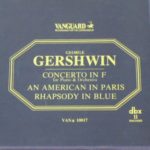 Gershwin An American in Paris, 7.5ips - 4 Track Stereo
Gershwin An American in Paris, 7.5ips - 4 Track Stereo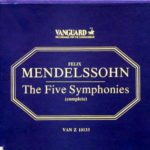 Mendelssohn The five symphonies (Complete), 7.5ips - 4 Track Stereo
Mendelssohn The five symphonies (Complete), 7.5ips - 4 Track Stereo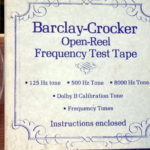 B.C. Open Reel Frequency Test Tape, 7.5ips - 4 Track Stereo
B.C. Open Reel Frequency Test Tape, 7.5ips - 4 Track Stereo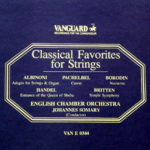 Various Classical Favorites For Strings-, 7.5ips - 4 Track Stereo
Various Classical Favorites For Strings-, 7.5ips - 4 Track Stereo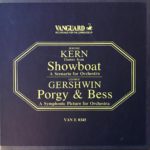 George Gershwin Porgy & Bess-, 7.5ips - 4 Track Stereo
George Gershwin Porgy & Bess-, 7.5ips - 4 Track Stereo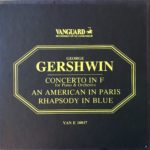 Gershwin Piano concerto in F, An American in Paris, Rhapsody in Blue-, 7.5ips - 4 Track Stereo
Gershwin Piano concerto in F, An American in Paris, Rhapsody in Blue-, 7.5ips - 4 Track Stereo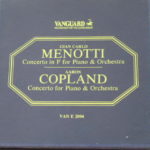 Menotti – Copland Piano Concertos, 7.5ips - 4 Track Stereo
Menotti – Copland Piano Concertos, 7.5ips - 4 Track Stereo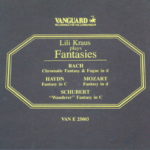 Fantasies- Lili Kraus – Bach Haydn, 7.5ips - 4 Track Stereo
Fantasies- Lili Kraus – Bach Haydn, 7.5ips - 4 Track Stereo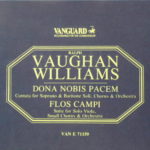 Vaughan Williams Flos Campi, 7.5ips - 4 Track Stereo
Vaughan Williams Flos Campi, 7.5ips - 4 Track Stereo Krommer Concerto Op. 36, Von Weber Concertino , Debussy 1st Rhapsody, Wagner Adagio, 7.5ips - 4 Track Stereo
Krommer Concerto Op. 36, Von Weber Concertino , Debussy 1st Rhapsody, Wagner Adagio, 7.5ips - 4 Track Stereo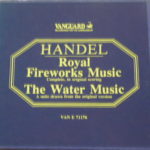 Handel Water Music, 7.5ips - 4 Track Stereo
Handel Water Music, 7.5ips - 4 Track Stereo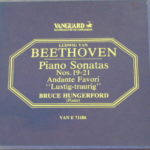 Beethoven Andante Favori, 7.5ips - 4 Track Stereo
Beethoven Andante Favori, 7.5ips - 4 Track Stereo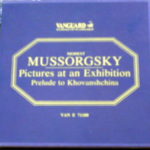 Mussorgsky Prelude to Khovanshchina, 7.5ips - 4 Track Stereo
Mussorgsky Prelude to Khovanshchina, 7.5ips - 4 Track Stereo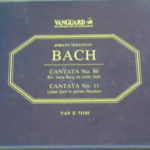 Bach Cantatas #80 & #11, 7.5ips - 4 Track Stereo
Bach Cantatas #80 & #11, 7.5ips - 4 Track Stereo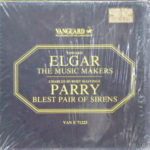 Elgar Parry Blest Pair of Sirens, 7.5ips - 4 Track Stereo
Elgar Parry Blest Pair of Sirens, 7.5ips - 4 Track Stereo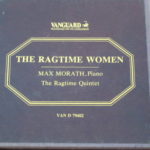 The Ragtime Women, 7.5ips - 4 Track Stereo
The Ragtime Women, 7.5ips - 4 Track Stereo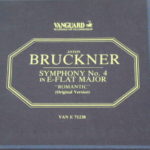 Bruckner Symphony #4 “Romantic” (original version), 7.5ips - 4 Track Stereo
Bruckner Symphony #4 “Romantic” (original version), 7.5ips - 4 Track Stereo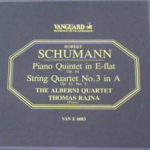 Schumann String quartet #3, 7.5ips - 4 Track Stereo
Schumann String quartet #3, 7.5ips - 4 Track Stereo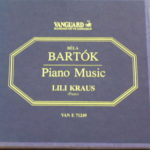 Bartok Piano music, 7.5ips - 4 Track Stereo
Bartok Piano music, 7.5ips - 4 Track Stereo Great waltz composers, 7.5ips - 4 Track Stereo
Great waltz composers, 7.5ips - 4 Track Stereo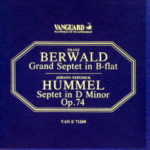 Franz Hummel Septet in D Minor, 7.5ips - 4 Track Stereo
Franz Hummel Septet in D Minor, 7.5ips - 4 Track Stereo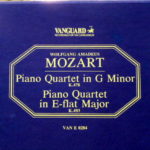 Mozart Piano Quartet, 7.5ips - 4 Track Stereo
Mozart Piano Quartet, 7.5ips - 4 Track Stereo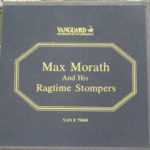 Max Morath And His Ragtime Stompers, 7.5ips - 4 Track Stereo
Max Morath And His Ragtime Stompers, 7.5ips - 4 Track Stereo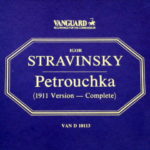 Stravinsky Petrouchka (1911 version, (Complete), 7.5ips - 4 Track Stereo
Stravinsky Petrouchka (1911 version, (Complete), 7.5ips - 4 Track Stereo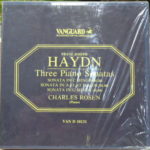 Haydn Three Piano Sonatas, 7.5ips - 4 Track Stereo
Haydn Three Piano Sonatas, 7.5ips - 4 Track Stereo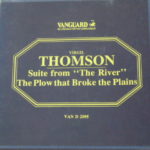 Thompson, The Plow that Broke the Plains-, 7.5ips - 4 Track Stereo
Thompson, The Plow that Broke the Plains-, 7.5ips - 4 Track Stereo Goldmark Rustic Wedding Symphony “Ländliche Hochzeit”, 7.5ips - 4 Track Stereo
Goldmark Rustic Wedding Symphony “Ländliche Hochzeit”, 7.5ips - 4 Track Stereo Vivaldi Virtuoso Trumpet-, 7.5ips - 4 Track Stereo
Vivaldi Virtuoso Trumpet-, 7.5ips - 4 Track Stereo Bach Vivaldi Four Concerti for Organ, 7.5ips - 4 Track Stereo
Bach Vivaldi Four Concerti for Organ, 7.5ips - 4 Track Stereo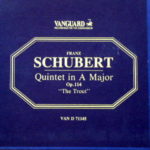 Schubert Quintet in A Major “The Trout”, 7.5ips - 4 Track Stereo
Schubert Quintet in A Major “The Trout”, 7.5ips - 4 Track Stereo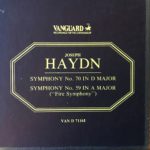 Haydn Symphonies 70 & 59 “Fire Symphony”-, 7.5ips - 4 Track Stereo
Haydn Symphonies 70 & 59 “Fire Symphony”-, 7.5ips - 4 Track Stereo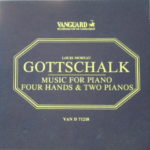 Gottschalk Music for Piano Four Hands & Two Pianos, 7.5ips - 4 Track Stereo
Gottschalk Music for Piano Four Hands & Two Pianos, 7.5ips - 4 Track Stereo Schubert Impromptus Op. 90 & Op. 142, 7.5ips - 4 Track Stereo
Schubert Impromptus Op. 90 & Op. 142, 7.5ips - 4 Track Stereo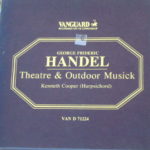 Handel Theatre & Outdoor music, 7.5ips - 4 Track Stereo
Handel Theatre & Outdoor music, 7.5ips - 4 Track Stereo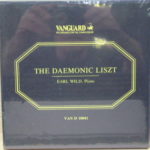 The daemonic Liszt (Reminiscences de Robert le Diable, Valse Infernale, Gnomenreigen, Mephisto Polka & Waltz), 7.5ips - 4 Track Stereo
The daemonic Liszt (Reminiscences de Robert le Diable, Valse Infernale, Gnomenreigen, Mephisto Polka & Waltz), 7.5ips - 4 Track Stereo Mozart Four quartets for flute & strings-, 7.5ips - 4 Track Stereo
Mozart Four quartets for flute & strings-, 7.5ips - 4 Track Stereo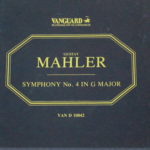 Mahler Symphony #4, 7.5ips - 4 Track Stereo
Mahler Symphony #4, 7.5ips - 4 Track Stereo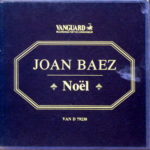 Joan Baez Noel, 7.5ips - 4 Track Stereo
Joan Baez Noel, 7.5ips - 4 Track Stereo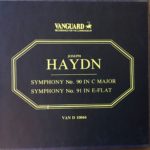 Haydn Symphonies #90 & #91-, 7.5ips - 4 Track Stereo
Haydn Symphonies #90 & #91-, 7.5ips - 4 Track Stereo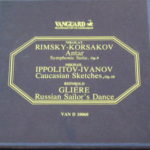 Rimsky Korsakov Antar-, 7.5ips - 4 Track Stereo
Rimsky Korsakov Antar-, 7.5ips - 4 Track Stereo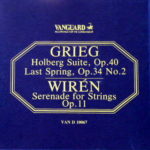 Grieg Holberg Suite, 7.5ips - 4 Track Stereo
Grieg Holberg Suite, 7.5ips - 4 Track Stereo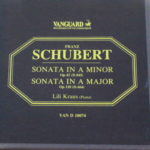 Schubert Piano sonatas, 7.5ips - 4 Track Stereo
Schubert Piano sonatas, 7.5ips - 4 Track Stereo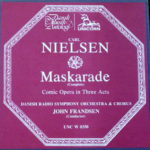 Nielsen Maskarade (Complete), 7.5ips - 4 Track Stereo
Nielsen Maskarade (Complete), 7.5ips - 4 Track Stereo Lehar & Strauss Merry Widow waltz, etc., 7.5ips - 4 Track Stereo
Lehar & Strauss Merry Widow waltz, etc., 7.5ips - 4 Track Stereo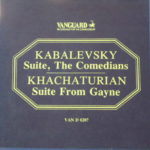 Kabalevsky Khachaturian Suite from Gayne, 7.5ips - 4 Track Stereo
Kabalevsky Khachaturian Suite from Gayne, 7.5ips - 4 Track Stereo Gould Latin American Symphonette-, 7.5ips - 4 Track Stereo
Gould Latin American Symphonette-, 7.5ips - 4 Track Stereo- Rameau Les Paladins, 7.5ips - 4 Track Stereo
 Beethoven Settings of Irish, Scottish and Welsh Folksongs-, 7.5ips - 4 Track Stereo
Beethoven Settings of Irish, Scottish and Welsh Folksongs-, 7.5ips - 4 Track Stereo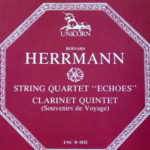 Herrmann, Bernard Clarinet Quintet “Souvenirs de Voyage”, 7.5ips - 4 Track Stereo
Herrmann, Bernard Clarinet Quintet “Souvenirs de Voyage”, 7.5ips - 4 Track Stereo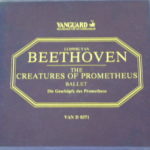 Beethoven Creatures of Prometheus, 7.5ips - 4 Track Stereo
Beethoven Creatures of Prometheus, 7.5ips - 4 Track Stereo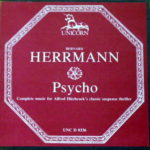 Herrmann, Bernard Psycho, 7.5ips - 4 Track Stereo
Herrmann, Bernard Psycho, 7.5ips - 4 Track Stereo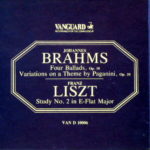 Brahms – Liszt Study #2, 7.5ips - 4 Track Stereo
Brahms – Liszt Study #2, 7.5ips - 4 Track Stereo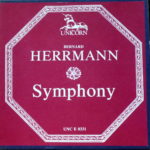 Herrmann, Bernard Symphony, 7.5ips - 4 Track Stereo
Herrmann, Bernard Symphony, 7.5ips - 4 Track Stereo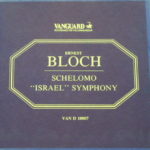 Bloch Schelomo Symphony, Israel Symphony, 7.5ips - 4 Track Stereo
Bloch Schelomo Symphony, Israel Symphony, 7.5ips - 4 Track Stereo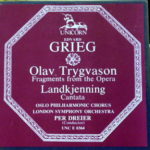 Grieg Olav Trygvason (fragments from the opera), Landkjenning (Cantata), 7.5ips - 4 Track Stereo
Grieg Olav Trygvason (fragments from the opera), Landkjenning (Cantata), 7.5ips - 4 Track Stereo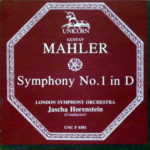 Mahler Symphony #1 “Titan”, 7.5ips - 4 Track Stereo
Mahler Symphony #1 “Titan”, 7.5ips - 4 Track Stereo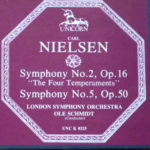 Carl Nielsen Symphony #2 Op. 16 “The Four Temperaments”, Symphony #5 Op. 50, 7.5ips - 4 Track Stereo
Carl Nielsen Symphony #2 Op. 16 “The Four Temperaments”, Symphony #5 Op. 50, 7.5ips - 4 Track Stereo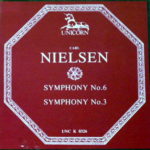 Carl Nielsen Symphonies #6 & #3, 7.5ips - 4 Track Stereo
Carl Nielsen Symphonies #6 & #3, 7.5ips - 4 Track Stereo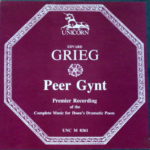 Grieg Peer Gynt, 7.5ips - 4 Track Stereo
Grieg Peer Gynt, 7.5ips - 4 Track Stereo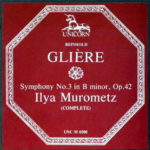 Reinhold Gliere Symphony #3 “Ilya Murometz” (Complete), 7.5ips - 4 Track Stereo
Reinhold Gliere Symphony #3 “Ilya Murometz” (Complete), 7.5ips - 4 Track Stereo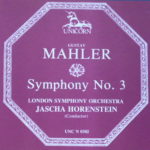 Mahler Symphony #3, 7.5ips - 4 Track Stereo
Mahler Symphony #3, 7.5ips - 4 Track Stereo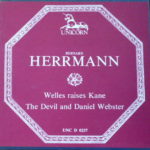 Herrmann, Bernard Welles raises Kane, 7.5ips - 4 Track Stereo
Herrmann, Bernard Welles raises Kane, 7.5ips - 4 Track Stereo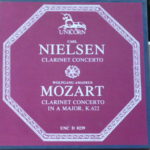 Carl Nielsen Clarinet concertos, 7.5ips - 4 Track Stereo
Carl Nielsen Clarinet concertos, 7.5ips - 4 Track Stereo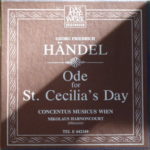 Handel Ode for St. Cecilia’s Day-, 7.5ips - 4 Track Stereo
Handel Ode for St. Cecilia’s Day-, 7.5ips - 4 Track Stereo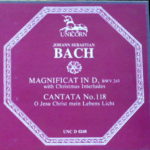 Bach Magnificat in D, Cantata #118, 7.5ips - 4 Track Stereo
Bach Magnificat in D, Cantata #118, 7.5ips - 4 Track Stereo Paganini Works for Violin & Guitar Vol 2-, 7.5ips - 4 Track Stereo
Paganini Works for Violin & Guitar Vol 2-, 7.5ips - 4 Track Stereo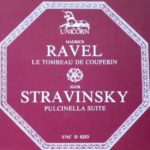 Ravel Stravinsky Pulcinella Suite, 7.5ips - 4 Track Stereo
Ravel Stravinsky Pulcinella Suite, 7.5ips - 4 Track Stereo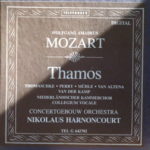 Mozart Thamos, 7.5ips - 4 Track Stereo
Mozart Thamos, 7.5ips - 4 Track Stereo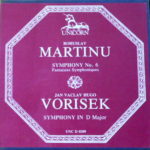 Martinu Vorisek Symphony in D Major, 7.5ips - 4 Track Stereo
Martinu Vorisek Symphony in D Major, 7.5ips - 4 Track Stereo Bach Brandenburg Concertos #1-6-, 7.5ips - 4 Track Stereo
Bach Brandenburg Concertos #1-6-, 7.5ips - 4 Track Stereo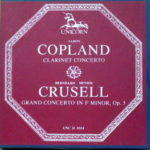 Copland Crusell Grand Concerto in F Minor Op. 5, 7.5ips - 4 Track Stereo
Copland Crusell Grand Concerto in F Minor Op. 5, 7.5ips - 4 Track Stereo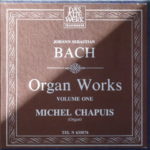 Bach Organ Works Vol 1 (Trio Sonatas #1-6, Two Fugues, Two Preludes, Two Fantasies, Trio BWV 584), 7.5ips - 4 Track Stereo
Bach Organ Works Vol 1 (Trio Sonatas #1-6, Two Fugues, Two Preludes, Two Fantasies, Trio BWV 584), 7.5ips - 4 Track Stereo Vienna Serenade, 7.5ips - 4 Track Stereo
Vienna Serenade, 7.5ips - 4 Track Stereo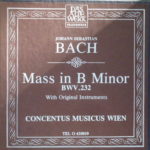 Bach Mass in B Minor, 7.5ips - 4 Track Stereo
Bach Mass in B Minor, 7.5ips - 4 Track Stereo Handel Alexander’s Feast-, 7.5ips - 4 Track Stereo
Handel Alexander’s Feast-, 7.5ips - 4 Track Stereo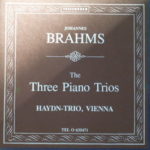 Brahms The three piano trios, 7.5ips - 4 Track Stereo
Brahms The three piano trios, 7.5ips - 4 Track Stereo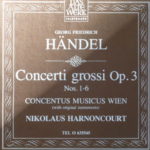 Handel Concerti Grossi Op. 3, 7.5ips - 4 Track Stereo
Handel Concerti Grossi Op. 3, 7.5ips - 4 Track Stereo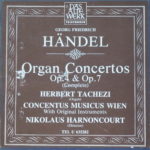 Handel Complete Organ Concertos-, 7.5ips - 4 Track Stereo
Handel Complete Organ Concertos-, 7.5ips - 4 Track Stereo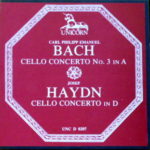 Bach, C.P.E. Haydn Cello Concertos, 7.5ips - 4 Track Stereo
Bach, C.P.E. Haydn Cello Concertos, 7.5ips - 4 Track Stereo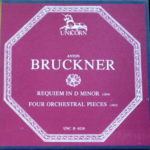 Bruckner Requiem, 7.5ips - 4 Track Stereo
Bruckner Requiem, 7.5ips - 4 Track Stereo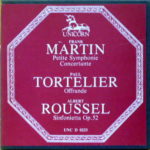 Martin, Frank Paul Tortelier Offrande, 7.5ips - 4 Track Stereo
Martin, Frank Paul Tortelier Offrande, 7.5ips - 4 Track Stereo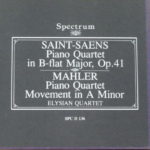 Saint-Saens Mahler Piano Quartet Movement in A Minor, 7.5ips - 4 Track Stereo
Saint-Saens Mahler Piano Quartet Movement in A Minor, 7.5ips - 4 Track Stereo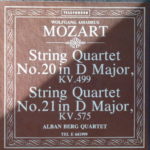 Mozart String Quartets #20 and #21, 7.5ips - 4 Track Stereo
Mozart String Quartets #20 and #21, 7.5ips - 4 Track Stereo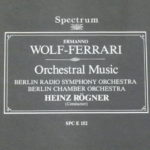 Wolf-Ferrari Orchestral Music, 7.5ips - 4 Track Stereo
Wolf-Ferrari Orchestral Music, 7.5ips - 4 Track Stereo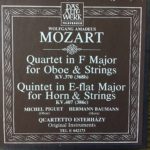 Mozart Quintet for Horn & Strings-, 7.5ips - 4 Track Stereo
Mozart Quintet for Horn & Strings-, 7.5ips - 4 Track Stereo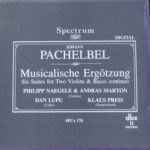 Pachelbel Six Suites for two Violins and Basso Continuo, 7.5ips - 4 Track Stereo
Pachelbel Six Suites for two Violins and Basso Continuo, 7.5ips - 4 Track Stereo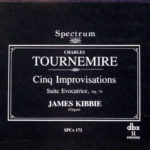 Tournemire Cinq Improvisations, Suite Evocatrice Op. 74, 7.5ips - 4 Track Stereo
Tournemire Cinq Improvisations, Suite Evocatrice Op. 74, 7.5ips - 4 Track Stereo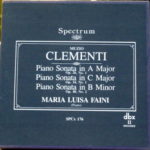 Clementi Three Piano Sonatas ( dbx only), 7.5ips - 4 Track Stereo
Clementi Three Piano Sonatas ( dbx only), 7.5ips - 4 Track Stereo Stark & Garvey Sing me to sleep (Lullabies) -, 7.5ips - 4 Track Stereo
Stark & Garvey Sing me to sleep (Lullabies) -, 7.5ips - 4 Track Stereo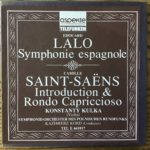 Lalo St-Saens Introduction & rondo capriccioco-, 7.5ips - 4 Track Stereo
Lalo St-Saens Introduction & rondo capriccioco-, 7.5ips - 4 Track Stereo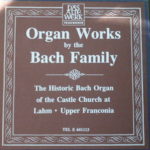 Various Organ works by the Bach family-, 7.5ips - 4 Track Stereo
Various Organ works by the Bach family-, 7.5ips - 4 Track Stereo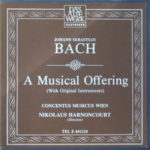 Bach A Musical Offering BWV 1079, 7.5ips - 4 Track Stereo
Bach A Musical Offering BWV 1079, 7.5ips - 4 Track Stereo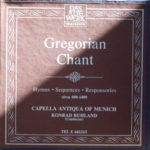 Gregorian Chant Hymns, Sequences, Responsories ca. 400-1400, 7.5ips - 4 Track Stereo
Gregorian Chant Hymns, Sequences, Responsories ca. 400-1400, 7.5ips - 4 Track Stereo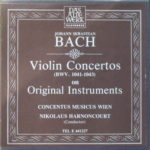 Bach Violin concertos on Original Instruments, 7.5ips - 4 Track Stereo
Bach Violin concertos on Original Instruments, 7.5ips - 4 Track Stereo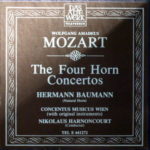 Mozart The Four Horn Concertos, 7.5ips - 4 Track Stereo
Mozart The Four Horn Concertos, 7.5ips - 4 Track Stereo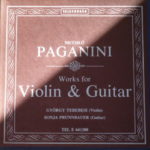 Paganini Works for violin & guitar, 7.5ips - 4 Track Stereo
Paganini Works for violin & guitar, 7.5ips - 4 Track Stereo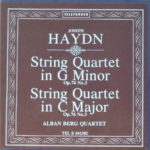 Haydn String quartets Op.74 & Op. 76, 7.5ips - 4 Track Stereo
Haydn String quartets Op.74 & Op. 76, 7.5ips - 4 Track Stereo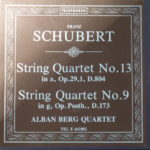 Schubert String Quartets #9 & #13, 7.5ips - 4 Track Stereo
Schubert String Quartets #9 & #13, 7.5ips - 4 Track Stereo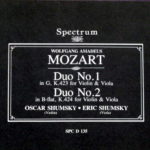 Mozart Duos #1 in G K.423, Duo #2 in F-flat K.424, 7.5ips - 4 Track Stereo
Mozart Duos #1 in G K.423, Duo #2 in F-flat K.424, 7.5ips - 4 Track Stereo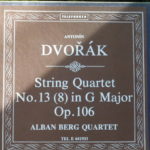 Dvorak String Quartet 13 (8), 7.5ips - 4 Track Stereo
Dvorak String Quartet 13 (8), 7.5ips - 4 Track Stereo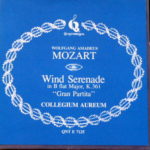 Mozart Wind serenade, Gran partita, 7.5ips - 4 Track Stereo
Mozart Wind serenade, Gran partita, 7.5ips - 4 Track Stereo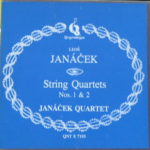 Janacek String Quartets #1 and #2, 7.5ips - 4 Track Stereo
Janacek String Quartets #1 and #2, 7.5ips - 4 Track Stereo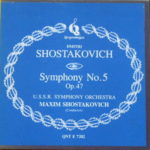 Shostakovich Symphony #5, 7.5ips - 4 Track Stereo
Shostakovich Symphony #5, 7.5ips - 4 Track Stereo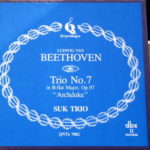 Beethoven “Archduke” Trio, 7.5ips - 4 Track Stereo
Beethoven “Archduke” Trio, 7.5ips - 4 Track Stereo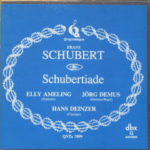 Schubert Schubertiade (Twelve Landler; Der Hirt auf dem Felsen; 8 Songs), 7.5ips - 4 Track Stereo
Schubert Schubertiade (Twelve Landler; Der Hirt auf dem Felsen; 8 Songs), 7.5ips - 4 Track Stereo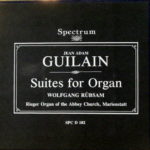 Guilain Suites for organ, 7.5ips - 4 Track Stereo
Guilain Suites for organ, 7.5ips - 4 Track Stereo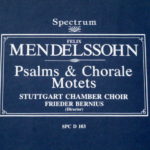 Mendelssohn Psalms and Choral Motets, 7.5ips - 4 Track Stereo
Mendelssohn Psalms and Choral Motets, 7.5ips - 4 Track Stereo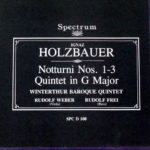 Ignaz Holzbauer Notturni #1 & #3 Quintet in G Major-, 7.5ips - 4 Track Stereo
Ignaz Holzbauer Notturni #1 & #3 Quintet in G Major-, 7.5ips - 4 Track Stereo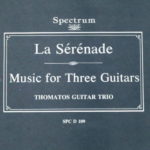 La Serenade Music for Three Guitars, 7.5ips - 4 Track Stereo
La Serenade Music for Three Guitars, 7.5ips - 4 Track Stereo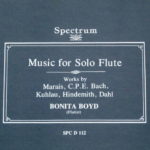 Music for solo flute, 7.5ips - 4 Track Stereo
Music for solo flute, 7.5ips - 4 Track Stereo Romantic Music for Piano Four-Hands (Works by Liszt, Wagner, Onslow & Balakirev), 7.5ips - 4 Track Stereo
Romantic Music for Piano Four-Hands (Works by Liszt, Wagner, Onslow & Balakirev), 7.5ips - 4 Track Stereo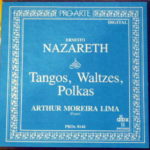 Arthur Moreira Lima plays Tangos, Waltzes, Polkas of Ernesto Nazareth, 7.5ips - 4 Track Stereo
Arthur Moreira Lima plays Tangos, Waltzes, Polkas of Ernesto Nazareth, 7.5ips - 4 Track Stereo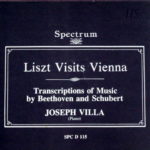 Liszt visits Vienna (Transcriptions of music by Beethoven and Schubert), 7.5ips - 4 Track Stereo
Liszt visits Vienna (Transcriptions of music by Beethoven and Schubert), 7.5ips - 4 Track Stereo Dvorak Piano Concerto, 7.5ips - 4 Track Stereo
Dvorak Piano Concerto, 7.5ips - 4 Track Stereo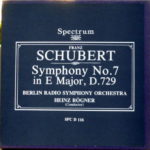 Schubert Symphony #7, 7.5ips - 4 Track Stereo
Schubert Symphony #7, 7.5ips - 4 Track Stereo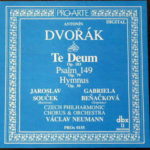 Dvorak Te Deum, Psalm 149, Hymnus, 7.5ips - 4 Track Stereo
Dvorak Te Deum, Psalm 149, Hymnus, 7.5ips - 4 Track Stereo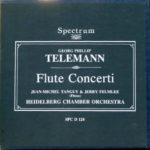 Telemann Flute Concerti, 7.5ips - 4 Track Stereo
Telemann Flute Concerti, 7.5ips - 4 Track Stereo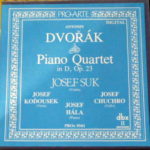 Dvorak Piano quartet in D Op. 23, 7.5ips - 4 Track Stereo
Dvorak Piano quartet in D Op. 23, 7.5ips - 4 Track Stereo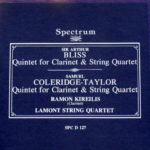 Bliss Coleridge-Taylor Quintet for Clarinet & String Quartet-, 7.5ips - 4 Track Stereo
Bliss Coleridge-Taylor Quintet for Clarinet & String Quartet-, 7.5ips - 4 Track Stereo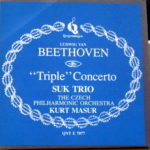 Beethoven Triple concerto, 7.5ips - 4 Track Stereo
Beethoven Triple concerto, 7.5ips - 4 Track Stereo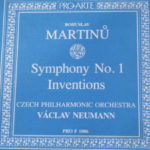 Martinu Symphony #1, Inventions, 7.5ips - 4 Track Stereo
Martinu Symphony #1, Inventions, 7.5ips - 4 Track Stereo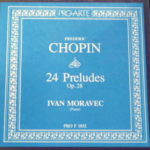 Chopin 24 Preludes Op. 28, 7.5ips - 4 Track Stereo
Chopin 24 Preludes Op. 28, 7.5ips - 4 Track Stereo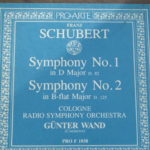 Schubert Symphony #1 in D Major D.82, Symphony #2 in B-flat Major D.125, 7.5ips - 4 Track Stereo
Schubert Symphony #1 in D Major D.82, Symphony #2 in B-flat Major D.125, 7.5ips - 4 Track Stereo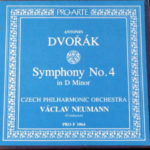 Dvorak Symphony #4 in D Minor, 7.5ips - 4 Track Stereo
Dvorak Symphony #4 in D Minor, 7.5ips - 4 Track Stereo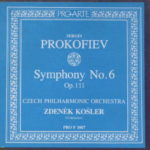 Prokofiev Symphony #6, 7.5ips - 4 Track Stereo
Prokofiev Symphony #6, 7.5ips - 4 Track Stereo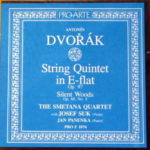 Dvorak String Quintet in E-flat Op. 97, Silent Woods Op. 68 No. 5, 7.5ips - 4 Track Stereo
Dvorak String Quintet in E-flat Op. 97, Silent Woods Op. 68 No. 5, 7.5ips - 4 Track Stereo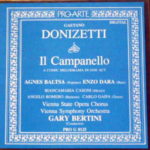 Donizetti Il Campanello, 7.5ips - 4 Track Stereo
Donizetti Il Campanello, 7.5ips - 4 Track Stereo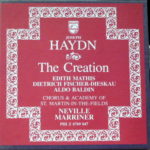 Haydn The Creation, 7.5ips - 4 Track Stereo
Haydn The Creation, 7.5ips - 4 Track Stereo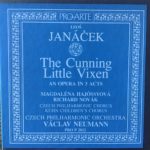 Janacek The Cunning Little Vixen-, 7.5ips - 4 Track Stereo
Janacek The Cunning Little Vixen-, 7.5ips - 4 Track Stereo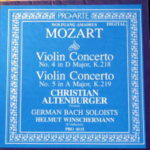 Mozart Violin Concertos #4 in D K.218 and #5 in A K.219, 7.5ips - 4 Track Stereo
Mozart Violin Concertos #4 in D K.218 and #5 in A K.219, 7.5ips - 4 Track Stereo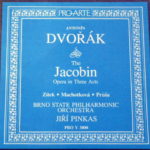 Dvorak the Jacobin opera in three acts, 7.5ips - 4 Track Stereo
Dvorak the Jacobin opera in three acts, 7.5ips - 4 Track Stereo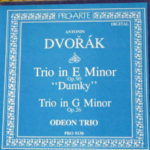 Dvorak Trio in E Minor “Dumky” Op. 90, Trio in G Minor Op. 26, 7.5ips - 4 Track Stereo
Dvorak Trio in E Minor “Dumky” Op. 90, Trio in G Minor Op. 26, 7.5ips - 4 Track Stereo Taneyev Suite de Concert for Violin & Orchestra Op. 28, 7.5ips - 4 Track Stereo
Taneyev Suite de Concert for Violin & Orchestra Op. 28, 7.5ips - 4 Track Stereo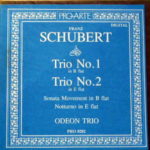 Schubert Trio #1 & #2, 7.5ips - 4 Track Stereo
Schubert Trio #1 & #2, 7.5ips - 4 Track Stereo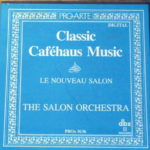 Various Classic Cafehaus Music-, 7.5ips - 4 Track Stereo
Various Classic Cafehaus Music-, 7.5ips - 4 Track Stereo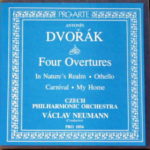 Dvorak Four Overtures, 7.5ips - 4 Track Stereo
Dvorak Four Overtures, 7.5ips - 4 Track Stereo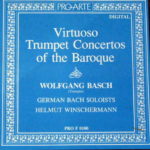 Virtuoso Trumpet Concertos Of The Baroque (Neruda, Endler, Molter, Telemann), 7.5ips - 4 Track Stereo
Virtuoso Trumpet Concertos Of The Baroque (Neruda, Endler, Molter, Telemann), 7.5ips - 4 Track Stereo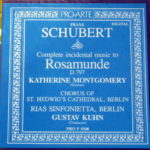 Schubert Complete Incidental music to Rosamunde, 7.5ips - 4 Track Stereo
Schubert Complete Incidental music to Rosamunde, 7.5ips - 4 Track Stereo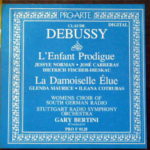 Debussy L’enfant Prodigue, La damoiselle élue, 7.5ips - 4 Track Stereo
Debussy L’enfant Prodigue, La damoiselle élue, 7.5ips - 4 Track Stereo Dvorak Violin concerto Op. 53, Romance for violin and orchestra Op. 11, 7.5ips - 4 Track Stereo
Dvorak Violin concerto Op. 53, Romance for violin and orchestra Op. 11, 7.5ips - 4 Track Stereo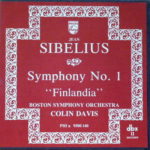 Sibelius Symphony #1 “Finlandia”, 7.5ips - 4 Track Stereo
Sibelius Symphony #1 “Finlandia”, 7.5ips - 4 Track Stereo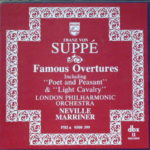 Von Suppe Famous overtures, Poet and peasant, Light cavalry, 7.5ips - 4 Track Stereo
Von Suppe Famous overtures, Poet and peasant, Light cavalry, 7.5ips - 4 Track Stereo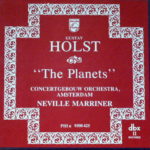 Holst The Planets, 7.5ips - 4 Track Stereo
Holst The Planets, 7.5ips - 4 Track Stereo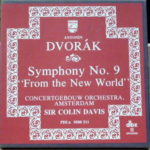 Dvorak Symphony #9 “From the New World”, 7.5ips - 4 Track Stereo
Dvorak Symphony #9 “From the New World”, 7.5ips - 4 Track Stereo Rodrigo Concierto De Aranjuez, Concierto Andaluz, 7.5ips - 4 Track Stereo
Rodrigo Concierto De Aranjuez, Concierto Andaluz, 7.5ips - 4 Track Stereo Stravinsky Le Sacre du Printemps-, 7.5ips - 4 Track Stereo
Stravinsky Le Sacre du Printemps-, 7.5ips - 4 Track Stereo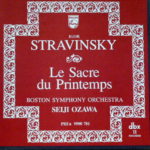 Stravinsky Le Sacre du Printemps, 7.5ips - 4 Track Stereo
Stravinsky Le Sacre du Printemps, 7.5ips - 4 Track Stereo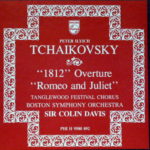 Tchaikovsky Romeo and Juliet, 1812 Overture, 7.5ips - 4 Track Stereo
Tchaikovsky Romeo and Juliet, 1812 Overture, 7.5ips - 4 Track Stereo Chopin the Complete Works for Piano and Orchestra, 7.5ips - 4 Track Stereo
Chopin the Complete Works for Piano and Orchestra, 7.5ips - 4 Track Stereo John Williams Pops in Space-, 7.5ips - 4 Track Stereo
John Williams Pops in Space-, 7.5ips - 4 Track Stereo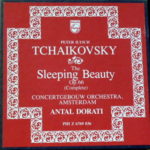 Tchaikovsky The Sleeping Beauty (Complete), 7.5ips - 4 Track Stereo
Tchaikovsky The Sleeping Beauty (Complete), 7.5ips - 4 Track Stereo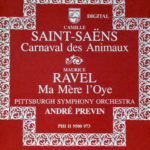 Saint-Saens Carnaval – Ravel Ma Mere L’oye, 7.5ips - 4 Track Stereo
Saint-Saens Carnaval – Ravel Ma Mere L’oye, 7.5ips - 4 Track Stereo Mahler Symphony #7, 7.5ips - 4 Track Stereo
Mahler Symphony #7, 7.5ips - 4 Track Stereo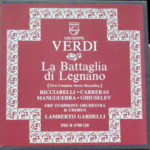 Verdi La Battaglia di Legnano, 7.5ips - 4 Track Stereo
Verdi La Battaglia di Legnano, 7.5ips - 4 Track Stereo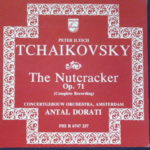 Tchaikovsky The Nutcracker (complete), 7.5ips - 4 Track Stereo
Tchaikovsky The Nutcracker (complete), 7.5ips - 4 Track Stereo Bruckner Symphony Nr. 7-, 7.5ips - 4 Track Stereo
Bruckner Symphony Nr. 7-, 7.5ips - 4 Track Stereo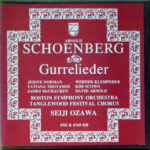 Schoenberg Gurrelieder, 7.5ips - 4 Track Stereo
Schoenberg Gurrelieder, 7.5ips - 4 Track Stereo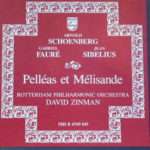 Schoenberg Faure Sibelius – Pelleas et Melisande, 7.5ips - 4 Track Stereo
Schoenberg Faure Sibelius – Pelleas et Melisande, 7.5ips - 4 Track Stereo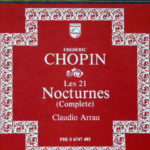 Chopin Les 21 nocturnes, 7.5ips - 4 Track Stereo
Chopin Les 21 nocturnes, 7.5ips - 4 Track Stereo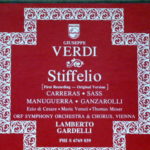 Verdi Stiffelio, 7.5ips - 4 Track Stereo
Verdi Stiffelio, 7.5ips - 4 Track Stereo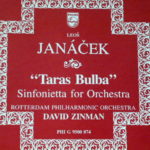 Janaceck Taras Bulba, Sinfonietta for Orchestra, 7.5ips - 4 Track Stereo
Janaceck Taras Bulba, Sinfonietta for Orchestra, 7.5ips - 4 Track Stereo Tchaikovsky Ballet music from operas, 7.5ips - 4 Track Stereo
Tchaikovsky Ballet music from operas, 7.5ips - 4 Track Stereo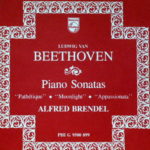 Beethoven Piano Sonatas Pathetique, Moonlight, Appasionata, 7.5ips - 4 Track Stereo
Beethoven Piano Sonatas Pathetique, Moonlight, Appasionata, 7.5ips - 4 Track Stereo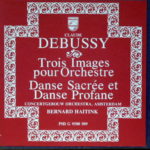 Debussy Trois images pour orchestre, Danse sacrée, Danse profane, 7.5ips - 4 Track Stereo
Debussy Trois images pour orchestre, Danse sacrée, Danse profane, 7.5ips - 4 Track Stereo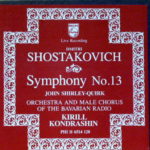 Shostakovich Symphony #13 (Live), 7.5ips - 4 Track Stereo
Shostakovich Symphony #13 (Live), 7.5ips - 4 Track Stereo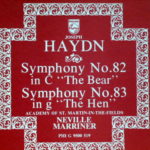 Haydn Symphony #82 “The Bear”, Symphony #83 “The Hen”, 7.5ips - 4 Track Stereo
Haydn Symphony #82 “The Bear”, Symphony #83 “The Hen”, 7.5ips - 4 Track Stereo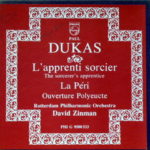 Dukas L’Apprenti sorcier, La Peri, 7.5ips - 4 Track Stereo
Dukas L’Apprenti sorcier, La Peri, 7.5ips - 4 Track Stereo Rodrigo Concierto de Aranjuez- Concierto Andaluz-, 7.5ips - 4 Track Stereo
Rodrigo Concierto de Aranjuez- Concierto Andaluz-, 7.5ips - 4 Track Stereo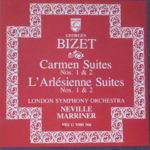 Bizet L’Arlesienne Suites #1 & #2, 7.5ips - 4 Track Stereo
Bizet L’Arlesienne Suites #1 & #2, 7.5ips - 4 Track Stereo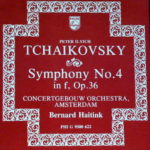 Tchaikovsky Symphony #4, 7.5ips - 4 Track Stereo
Tchaikovsky Symphony #4, 7.5ips - 4 Track Stereo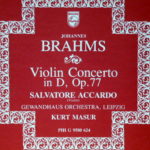 Brahms Violin Concerto in D Op. 77, 7.5ips - 4 Track Stereo
Brahms Violin Concerto in D Op. 77, 7.5ips - 4 Track Stereo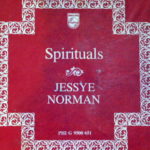 Jessye Nornan Spirituals, 7.5ips - 4 Track Stereo
Jessye Nornan Spirituals, 7.5ips - 4 Track Stereo Debussy Trois Nocturnes, Jeux D’eau, 7.5ips - 4 Track Stereo
Debussy Trois Nocturnes, Jeux D’eau, 7.5ips - 4 Track Stereo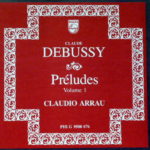 Debussy Preludes Vol 1, 7.5ips - 4 Track Stereo
Debussy Preludes Vol 1, 7.5ips - 4 Track Stereo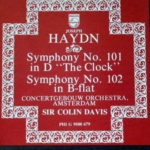 Haydn Symphonies #101 “The Clock” & #102, 7.5ips - 4 Track Stereo
Haydn Symphonies #101 “The Clock” & #102, 7.5ips - 4 Track Stereo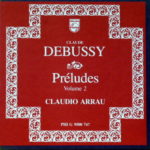 Debussy Preludes Vol 2, 7.5ips - 4 Track Stereo
Debussy Preludes Vol 2, 7.5ips - 4 Track Stereo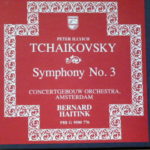 Tchaikovsky Symphony #3, 7.5ips - 4 Track Stereo
Tchaikovsky Symphony #3, 7.5ips - 4 Track Stereo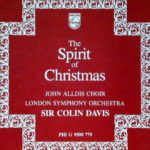 Spirit of Christmas, 7.5ips - 4 Track Stereo
Spirit of Christmas, 7.5ips - 4 Track Stereo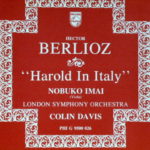 Berlioz Harold in Italy, 7.5ips - 4 Track Stereo
Berlioz Harold in Italy, 7.5ips - 4 Track Stereo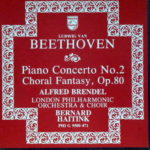 Beethoven Piano Concerto #2, Choral Fantasy, 7.5ips - 4 Track Stereo
Beethoven Piano Concerto #2, Choral Fantasy, 7.5ips - 4 Track Stereo Sibelius Symphony 1, Finlandia, 7.5ips - 4 Track Stereo
Sibelius Symphony 1, Finlandia, 7.5ips - 4 Track Stereo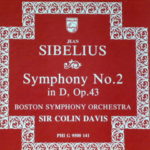 Sibelius Symphony #2, 7.5ips - 4 Track Stereo
Sibelius Symphony #2, 7.5ips - 4 Track Stereo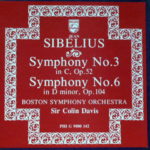 Sibelius Symphonies #3 & #6, 7.5ips - 4 Track Stereo
Sibelius Symphonies #3 & #6, 7.5ips - 4 Track Stereo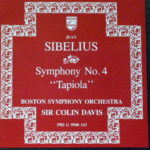 Sibelius Symphony #4 “Tapiola”, 7.5ips - 4 Track Stereo
Sibelius Symphony #4 “Tapiola”, 7.5ips - 4 Track Stereo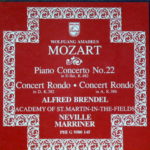 Mozart Piano concerto #22, Concerto Rondo, 7.5ips - 4 Track Stereo
Mozart Piano concerto #22, Concerto Rondo, 7.5ips - 4 Track Stereo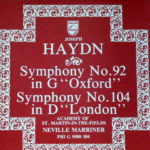 Haydn Symphonies #92 “Oxfford” & #104 “London”, 7.5ips - 4 Track Stereo
Haydn Symphonies #92 “Oxfford” & #104 “London”, 7.5ips - 4 Track Stereo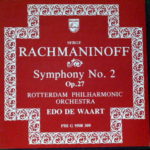 Rachmaninoff Symphony #2, 7.5ips - 4 Track Stereo
Rachmaninoff Symphony #2, 7.5ips - 4 Track Stereo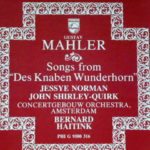 Mahler Songs from Des Knaben Wunderhorn, 7.5ips - 4 Track Stereo
Mahler Songs from Des Knaben Wunderhorn, 7.5ips - 4 Track Stereo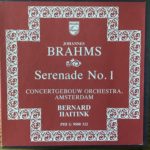 Brahms Serenade #1, 7.5ips - 4 Track Stereo
Brahms Serenade #1, 7.5ips - 4 Track Stereo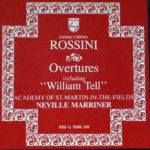 Rossini Overtures (including William Tell), 7.5ips - 4 Track Stereo
Rossini Overtures (including William Tell), 7.5ips - 4 Track Stereo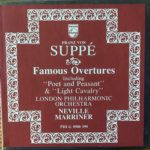 Von Suppe Famous Overtures, Poet and peasant, Light cavalry-, 7.5ips - 4 Track Stereo
Von Suppe Famous Overtures, Poet and peasant, Light cavalry-, 7.5ips - 4 Track Stereo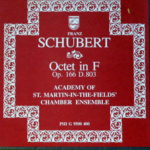 Schubert Octet in F Op. 166 D.803, 7.5ips - 4 Track Stereo
Schubert Octet in F Op. 166 D.803, 7.5ips - 4 Track Stereo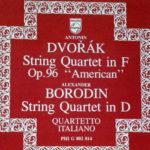 Dvorak Borodin String Quartet in D-, 7.5ips - 4 Track Stereo
Dvorak Borodin String Quartet in D-, 7.5ips - 4 Track Stereo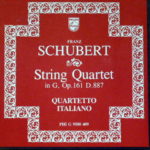 Schubert String Quartet in G Op. 161 D.887, 7.5ips - 4 Track Stereo
Schubert String Quartet in G Op. 161 D.887, 7.5ips - 4 Track Stereo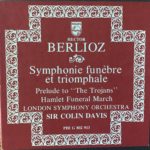 Berlioz Symphonie funebre et triomphale, Prelude to “Les Troyens”, Hamlet Funeral March, 7.5ips - 4 Track Stereo
Berlioz Symphonie funebre et triomphale, Prelude to “Les Troyens”, Hamlet Funeral March, 7.5ips - 4 Track Stereo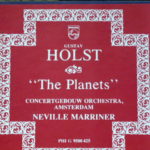 Holst The Planets, 7.5ips - 4 Track Stereo
Holst The Planets, 7.5ips - 4 Track Stereo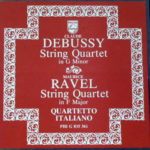 Debussy & Ravel String Quartets, 7.5ips - 4 Track Stereo
Debussy & Ravel String Quartets, 7.5ips - 4 Track Stereo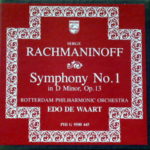 Rachmaninoff Symphony #1, 7.5ips - 4 Track Stereo
Rachmaninoff Symphony #1, 7.5ips - 4 Track Stereo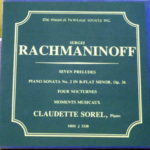 Rachmaninoff Sonata #2, 7.5ips - 4 Track Stereo
Rachmaninoff Sonata #2, 7.5ips - 4 Track Stereo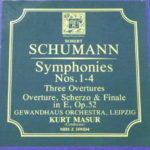 Schumann Symphonies 1-4, 7.5ips - 4 Track Stereo
Schumann Symphonies 1-4, 7.5ips - 4 Track Stereo- Bach Messae Breves BWV 233-6, 7.5ips - 4 Track Stereo
 Beethoven Piano Sonatas (Pathetique, Moonlight, Appassionata), 7.5ips - 4 Track Stereo
Beethoven Piano Sonatas (Pathetique, Moonlight, Appassionata), 7.5ips - 4 Track Stereo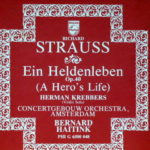 Strauss Ein Heldenleben, 7.5ips - 4 Track Stereo
Strauss Ein Heldenleben, 7.5ips - 4 Track Stereo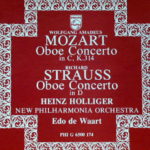 Mozart & Strauss Oboe concertos, 7.5ips - 4 Track Stereo
Mozart & Strauss Oboe concertos, 7.5ips - 4 Track Stereo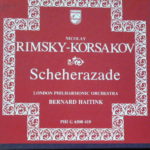 Rimsky Korsakov Scheherazade, 7.5ips - 4 Track Stereo
Rimsky Korsakov Scheherazade, 7.5ips - 4 Track Stereo Mozart Piano concertos #21 & 25, 7.5ips - 4 Track Stereo
Mozart Piano concertos #21 & 25, 7.5ips - 4 Track Stereo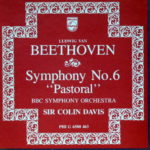 Beethoven Symphony #6 “Pastoral”, 7.5ips - 4 Track Stereo
Beethoven Symphony #6 “Pastoral”, 7.5ips - 4 Track Stereo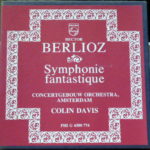 Berlioz Symphonie Fantastique, 7.5ips - 4 Track Stereo
Berlioz Symphonie Fantastique, 7.5ips - 4 Track Stereo The Scottish Bagpipe, 7.5ips - 4 Track Stereo
The Scottish Bagpipe, 7.5ips - 4 Track Stereo- Tchaikovsky Serenade for strings, 7.5ips - 4 Track Stereo
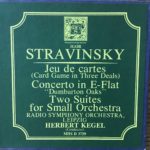 Stravinsky Jeu de Cartes-, 7.5ips - 4 Track Stereo
Stravinsky Jeu de Cartes-, 7.5ips - 4 Track Stereo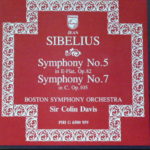 Sibelius Symphonies #5 Op. 82, Symphony #7, 7.5ips - 4 Track Stereo
Sibelius Symphonies #5 Op. 82, Symphony #7, 7.5ips - 4 Track Stereo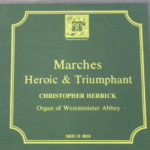 Various Marches Heroic & Triumphant-, 7.5ips - 4 Track Stereo
Various Marches Heroic & Triumphant-, 7.5ips - 4 Track Stereo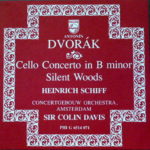 Dvorak Silent Woods, 7.5ips - 4 Track Stereo
Dvorak Silent Woods, 7.5ips - 4 Track Stereo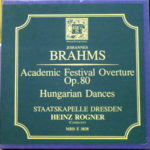 Brahms 14 Hungarian Dances, Academic Festival Overture, 7.5ips - 4 Track Stereo
Brahms 14 Hungarian Dances, Academic Festival Overture, 7.5ips - 4 Track Stereo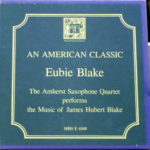 Blake, Eubie Music of James Hubert Blake, 7.5ips - 4 Track Stereo
Blake, Eubie Music of James Hubert Blake, 7.5ips - 4 Track Stereo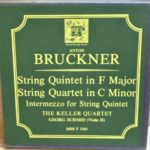 Bruckner String Quintet in F Major-, 7.5ips - 4 Track Stereo
Bruckner String Quintet in F Major-, 7.5ips - 4 Track Stereo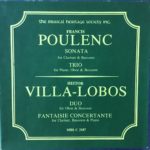 Poulenc Villa-Lobos Duo for Oboe & Bassoon, Fantaisie Concertante-, 7.5ips - 4 Track Stereo
Poulenc Villa-Lobos Duo for Oboe & Bassoon, Fantaisie Concertante-, 7.5ips - 4 Track Stereo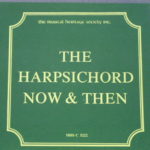 The The Harpsichord Now and Then (works by Bach, Michelangelo Rossi, Busoni, Martinu, Rudy Shackelford, Herbert Howells), 7.5ips - 4 Track Stereo
The The Harpsichord Now and Then (works by Bach, Michelangelo Rossi, Busoni, Martinu, Rudy Shackelford, Herbert Howells), 7.5ips - 4 Track Stereo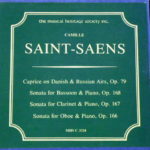 Saint Saens Sonata for Bassoon & Piano, 7.5ips - 4 Track Stereo
Saint Saens Sonata for Bassoon & Piano, 7.5ips - 4 Track Stereo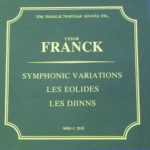 Franck Symphonic Variations, 7.5ips - 4 Track Stereo
Franck Symphonic Variations, 7.5ips - 4 Track Stereo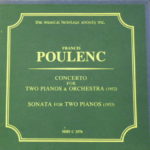 Poulenc Concerto for Two Pianos and Orchestra, Sonata for Two Pianos, 7.5ips - 4 Track Stereo
Poulenc Concerto for Two Pianos and Orchestra, Sonata for Two Pianos, 7.5ips - 4 Track Stereo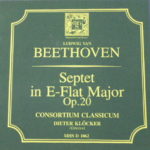 Beethoven Septet, 7.5ips - 4 Track Stereo
Beethoven Septet, 7.5ips - 4 Track Stereo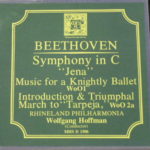 Beethoven Symphony in C, 7.5ips - 4 Track Stereo
Beethoven Symphony in C, 7.5ips - 4 Track Stereo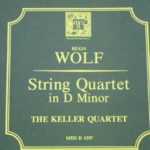 Wolf String Quartet in D, 7.5ips - 4 Track Stereo
Wolf String Quartet in D, 7.5ips - 4 Track Stereo Mozart Serenades #11 & #12, 7.5ips - 4 Track Stereo
Mozart Serenades #11 & #12, 7.5ips - 4 Track Stereo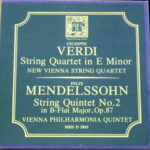 Verdi String Quartet Mendelssohn Quintet #2, 7.5ips - 4 Track Stereo
Verdi String Quartet Mendelssohn Quintet #2, 7.5ips - 4 Track Stereo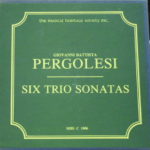 Pergolesi Six Trio Sonatas, 7.5ips - 4 Track Stereo
Pergolesi Six Trio Sonatas, 7.5ips - 4 Track Stereo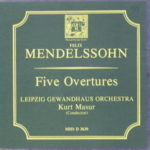 Mendelssohn Five overtures, 7.5ips - 4 Track Stereo
Mendelssohn Five overtures, 7.5ips - 4 Track Stereo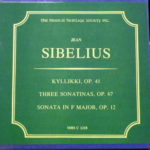 Sibelius Piano Music Kyllikki, Three sonatinas, Sonata in F Major, 7.5ips - 4 Track Stereo
Sibelius Piano Music Kyllikki, Three sonatinas, Sonata in F Major, 7.5ips - 4 Track Stereo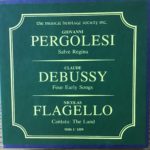 Pergolesi Debussy four early songs-, 7.5ips - 4 Track Stereo
Pergolesi Debussy four early songs-, 7.5ips - 4 Track Stereo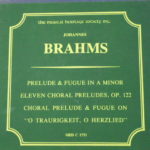 Brahms Organ works (Prelude & Fugue, 11 Choral Preludes, Choral Prelude & Fugue), 7.5ips - 4 Track Stereo
Brahms Organ works (Prelude & Fugue, 11 Choral Preludes, Choral Prelude & Fugue), 7.5ips - 4 Track Stereo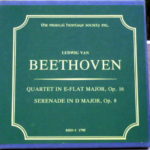 Beethoven Quartet in E-flat, Serenade in D Major, 7.5ips - 4 Track Stereo
Beethoven Quartet in E-flat, Serenade in D Major, 7.5ips - 4 Track Stereo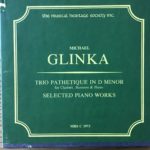 Glinka Trio Pathétique, Nightingale Variations, Waltz, Nocturne, 2 Mazurkas, Barcarolle, 7.5ips - 4 Track Stereo
Glinka Trio Pathétique, Nightingale Variations, Waltz, Nocturne, 2 Mazurkas, Barcarolle, 7.5ips - 4 Track Stereo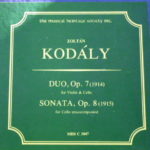 Kodaly Cello Sonata Op. 8, 7.5ips - 4 Track Stereo
Kodaly Cello Sonata Op. 8, 7.5ips - 4 Track Stereo Respighi Ancient Airs & Dances, 7.5ips - 4 Track Stereo
Respighi Ancient Airs & Dances, 7.5ips - 4 Track Stereo Respighi The Birds, Brazilian Impressions, 7.5ips - 4 Track Stereo
Respighi The Birds, Brazilian Impressions, 7.5ips - 4 Track Stereo Bartok Concerto for Orchestra, 7.5ips - 4 Track Stereo
Bartok Concerto for Orchestra, 7.5ips - 4 Track Stereo Tchaikovsky Complete Suites for Orchestra, 7.5ips - 4 Track Stereo
Tchaikovsky Complete Suites for Orchestra, 7.5ips - 4 Track Stereo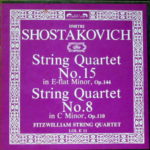 Shostakovich String Quartets #8 and #15, 7.5ips - 4 Track Stereo
Shostakovich String Quartets #8 and #15, 7.5ips - 4 Track Stereo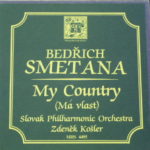 Smetana Ma Vlast, 7.5ips - 4 Track Stereo
Smetana Ma Vlast, 7.5ips - 4 Track Stereo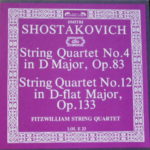 Shostakovitch String Quartets #4 and #12, 7.5ips - 4 Track Stereo
Shostakovitch String Quartets #4 and #12, 7.5ips - 4 Track Stereo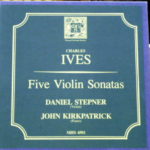 Ives Five Sonatas (for Violin and Piano), 7.5ips - 4 Track Stereo
Ives Five Sonatas (for Violin and Piano), 7.5ips - 4 Track Stereo Vivaldi Gloria in D Major, 7.5ips - 4 Track Stereo
Vivaldi Gloria in D Major, 7.5ips - 4 Track Stereo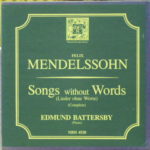 Mendelssohn Songs Without Words (complete), 7.5ips - 4 Track Stereo
Mendelssohn Songs Without Words (complete), 7.5ips - 4 Track Stereo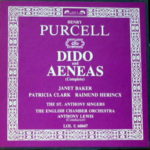 Purcell Dido & Aeneas, 7.5ips - 4 Track Stereo
Purcell Dido & Aeneas, 7.5ips - 4 Track Stereo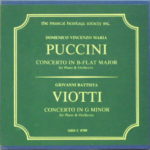 Puccini Viotti Concerto in G Minor, 7.5ips - 4 Track Stereo
Puccini Viotti Concerto in G Minor, 7.5ips - 4 Track Stereo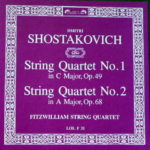 Shostakovich String Quartets #1 and #2, 7.5ips - 4 Track Stereo
Shostakovich String Quartets #1 and #2, 7.5ips - 4 Track Stereo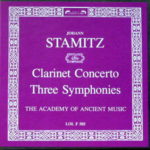 Stamitz Three Symphonies, 7.5ips - 4 Track Stereo
Stamitz Three Symphonies, 7.5ips - 4 Track Stereo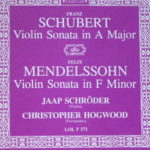 Schubert Mendelssohn Violin Sonata in F Minor, 7.5ips - 4 Track Stereo
Schubert Mendelssohn Violin Sonata in F Minor, 7.5ips - 4 Track Stereo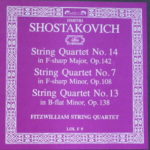 Shostakovich String Quartets #7, 13 & 14, 7.5ips - 4 Track Stereo
Shostakovich String Quartets #7, 13 & 14, 7.5ips - 4 Track Stereo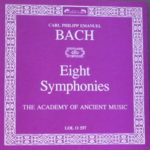 Bach C. P. E. Eight Symphonies, 7.5ips - 4 Track Stereo
Bach C. P. E. Eight Symphonies, 7.5ips - 4 Track Stereo Vivaldi L’Estro Armonico Op. 3, 7.5ips - 4 Track Stereo
Vivaldi L’Estro Armonico Op. 3, 7.5ips - 4 Track Stereo Mozart Symphonies Salzburg 1772-1773 Vol 3, 7.5ips - 4 Track Stereo
Mozart Symphonies Salzburg 1772-1773 Vol 3, 7.5ips - 4 Track Stereo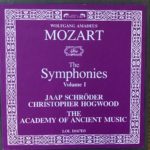 Mozart Symphonies Salzburg 1773-1775 Vol 4, 7.5ips - 4 Track Stereo
Mozart Symphonies Salzburg 1773-1775 Vol 4, 7.5ips - 4 Track Stereo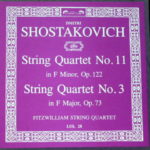 Shostakovich String Quartets #3 and #11, 7.5ips - 4 Track Stereo
Shostakovich String Quartets #3 and #11, 7.5ips - 4 Track Stereo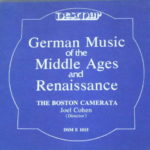 Various German Music of the Middle Ages and Renaissance-, 7.5ips - 4 Track Stereo
Various German Music of the Middle Ages and Renaissance-, 7.5ips - 4 Track Stereo- Mozart The Symphonies Vol 1, 7.5ips - 4 Track Stereo
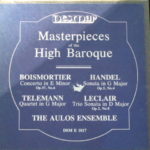 Masterpieces of the High Baroque, 7.5ips - 4 Track Stereo
Masterpieces of the High Baroque, 7.5ips - 4 Track Stereo- Mozart Symphonies Salzburg 1772-1773 Vol 2, 7.5ips - 4 Track Stereo
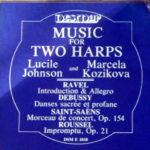 Music for two Harps, 7.5ips - 4 Track Stereo
Music for two Harps, 7.5ips - 4 Track Stereo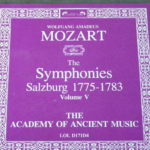 Mozart Symphonies Salzburg 1775-1783 Vol 5, 7.5ips - 4 Track Stereo
Mozart Symphonies Salzburg 1775-1783 Vol 5, 7.5ips - 4 Track Stereo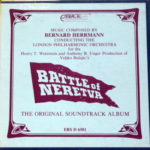 Battle of Neretva, 7.5ips - 4 Track Stereo
Battle of Neretva, 7.5ips - 4 Track Stereo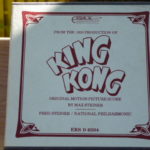 King Kong, 7.5ips - 4 Track Stereo
King Kong, 7.5ips - 4 Track Stereo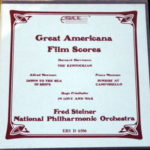 Great Americana Film Scores, 7.5ips - 4 Track Stereo
Great Americana Film Scores, 7.5ips - 4 Track Stereo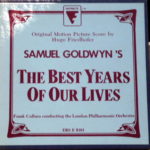 The best years of our lives Soundtrack, 7.5ips - 4 Track Stereo
The best years of our lives Soundtrack, 7.5ips - 4 Track Stereo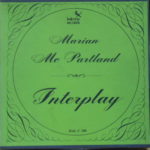 Marian McPartland Interplay, 7.5ips - 4 Track Stereo
Marian McPartland Interplay, 7.5ips - 4 Track Stereo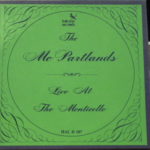 The McPartlands Live At The Monticello, 7.5ips - 4 Track Stereo
The McPartlands Live At The Monticello, 7.5ips - 4 Track Stereo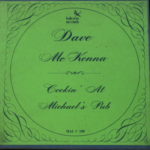 Dave McKenna Cookin’ at Michael’s Pub, 7.5ips - 4 Track Stereo
Dave McKenna Cookin’ at Michael’s Pub, 7.5ips - 4 Track Stereo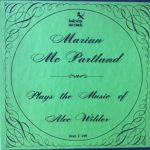 Marian McPartland plays the music of Alec Wilder, 7.5ips - 4 Track Stereo
Marian McPartland plays the music of Alec Wilder, 7.5ips - 4 Track Stereo- Marian McPartland Solo Concert at Havenford, 7.5ips - 4 Track Stereo
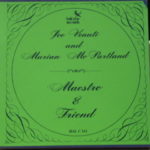 Joe Venuti The Maestro and Friend, 7.5ips - 4 Track Stereo
Joe Venuti The Maestro and Friend, 7.5ips - 4 Track Stereo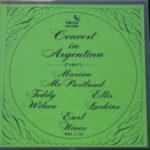 Marian McPartland Concert in Argentina, 7.5ips - 4 Track Stereo
Marian McPartland Concert in Argentina, 7.5ips - 4 Track Stereo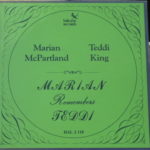 Marian McPartland & Teddi King Marian remembers Teddi, 7.5ips - 4 Track Stereo
Marian McPartland & Teddi King Marian remembers Teddi, 7.5ips - 4 Track Stereo- Beethoven Symphony #5, 7.5ips - 4 Track Stereo
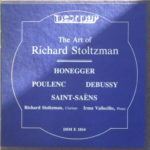 Honegger Sonatine, 7.5ips - 4 Track Stereo
Honegger Sonatine, 7.5ips - 4 Track Stereo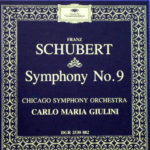 Schubert Symphony #9, 7.5ips - 4 Track Stereo
Schubert Symphony #9, 7.5ips - 4 Track Stereo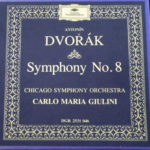 Dvorak Symphony #8, 7.5ips - 4 Track Stereo
Dvorak Symphony #8, 7.5ips - 4 Track Stereo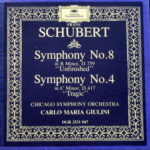 Schubert Symphonies #4 “Tragic” and #8 “Unfinished”, 7.5ips - 4 Track Stereo
Schubert Symphonies #4 “Tragic” and #8 “Unfinished”, 7.5ips - 4 Track Stereo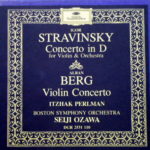 Stravinsky Berg Violin Concerto, 7.5ips - 4 Track Stereo
Stravinsky Berg Violin Concerto, 7.5ips - 4 Track Stereo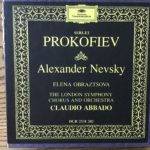 Prokofiev Alexander Nevsky-, 7.5ips - 4 Track Stereo
Prokofiev Alexander Nevsky-, 7.5ips - 4 Track Stereo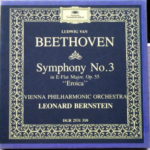 Beethoven Symphony #3 “Eroica”, 7.5ips - 4 Track Stereo
Beethoven Symphony #3 “Eroica”, 7.5ips - 4 Track Stereo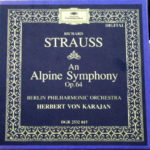 Strauss Alpine Symphony, 7.5ips - 4 Track Stereo
Strauss Alpine Symphony, 7.5ips - 4 Track Stereo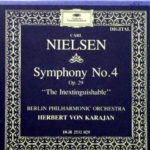 Nielsen Symphony #4 “The Inextinguishable”, 7.5ips - 4 Track Stereo
Nielsen Symphony #4 “The Inextinguishable”, 7.5ips - 4 Track Stereo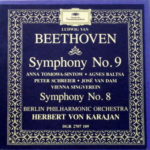 Beethoven Symphony #8 and Symphony #9, 7.5ips - 4 Track Stereo
Beethoven Symphony #8 and Symphony #9, 7.5ips - 4 Track Stereo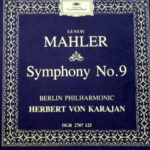 Mahler Symphony #9, 7.5ips - 4 Track Stereo
Mahler Symphony #9, 7.5ips - 4 Track Stereo Rachmaninoff Symphony #3, Vocalise, 7.5ips - 4 Track Stereo
Rachmaninoff Symphony #3, Vocalise, 7.5ips - 4 Track Stereo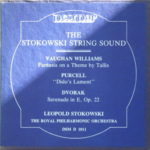 The Stokowski String Sound, 7.5ips - 4 Track Stereo
The Stokowski String Sound, 7.5ips - 4 Track Stereo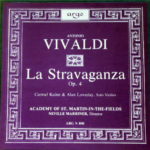 Vivaldi La Stravaganza, 7.5ips - 4 Track Stereo
Vivaldi La Stravaganza, 7.5ips - 4 Track Stereo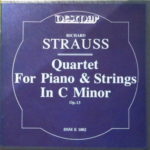 Strauss Quartet for Piano and Strings in C Minor, 7.5ips - 4 Track Stereo
Strauss Quartet for Piano and Strings in C Minor, 7.5ips - 4 Track Stereo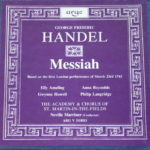 Handel Messiah-, 7.5ips - 4 Track Stereo
Handel Messiah-, 7.5ips - 4 Track Stereo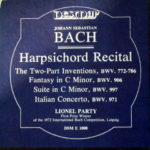 Bach Harpsichord Recital (Two part Inventions, Fantasy in C Minor, Suite in C Minor, Italian Concerto), 7.5ips - 4 Track Stereo
Bach Harpsichord Recital (Two part Inventions, Fantasy in C Minor, Suite in C Minor, Italian Concerto), 7.5ips - 4 Track Stereo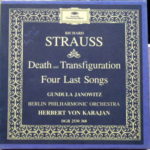 Strauss Four Last Songs, Death & Transfiguration, 7.5ips - 4 Track Stereo
Strauss Four Last Songs, Death & Transfiguration, 7.5ips - 4 Track Stereo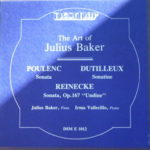 The Art of Richard Baker Poulenc Sonata Reinecke Sonata, 7.5ips - 4 Track Stereo
The Art of Richard Baker Poulenc Sonata Reinecke Sonata, 7.5ips - 4 Track Stereo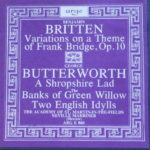 Britten Variations on a theme of Frank Bridge-, 7.5ips - 4 Track Stereo
Britten Variations on a theme of Frank Bridge-, 7.5ips - 4 Track Stereo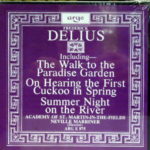 Delius The Walk To the Paradise Garden-, 7.5ips - 4 Track Stereo
Delius The Walk To the Paradise Garden-, 7.5ips - 4 Track Stereo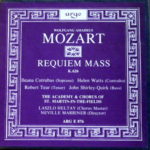 Mozart Requiem Mass, 7.5ips - 4 Track Stereo
Mozart Requiem Mass, 7.5ips - 4 Track Stereo Poulenc Organ Concerto, Concert Champetre for Harpsichord & Orchestra, 7.5ips - 4 Track Stereo
Poulenc Organ Concerto, Concert Champetre for Harpsichord & Orchestra, 7.5ips - 4 Track Stereo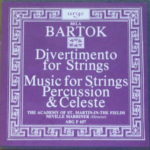 Bartok Divertimento for Strings, Music for Strings Percussion & Celeste-, 7.5ips - 4 Track Stereo
Bartok Divertimento for Strings, Music for Strings Percussion & Celeste-, 7.5ips - 4 Track Stereo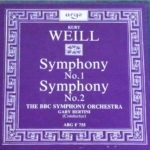 Kurt Weill Symphonies #1 and #2, 7.5ips - 4 Track Stereo
Kurt Weill Symphonies #1 and #2, 7.5ips - 4 Track Stereo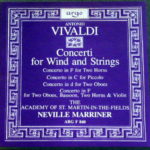 Vivaldi Concerti for Winds & Strings, 7.5ips - 4 Track Stereo
Vivaldi Concerti for Winds & Strings, 7.5ips - 4 Track Stereo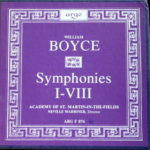 William Boyce Symphonies #1-8, 7.5ips - 4 Track Stereo
William Boyce Symphonies #1-8, 7.5ips - 4 Track Stereo Danio The Play of Daniel-, 7.5ips - 4 Track Stereo
Danio The Play of Daniel-, 7.5ips - 4 Track Stereo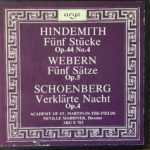 Hindemith Five Pieces Op. 44 No. 4-, 7.5ips - 4 Track Stereo
Hindemith Five Pieces Op. 44 No. 4-, 7.5ips - 4 Track Stereo Mozart Flute Concertos, 7.5ips - 4 Track Stereo
Mozart Flute Concertos, 7.5ips - 4 Track Stereo Misc. Christmas at Saint John’s-, 7.5ips - 4 Track Stereo
Misc. Christmas at Saint John’s-, 7.5ips - 4 Track Stereo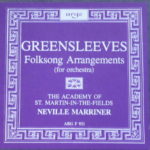 Various Greensleves Folksong arrangements-, 7.5ips - 4 Track Stereo
Various Greensleves Folksong arrangements-, 7.5ips - 4 Track Stereo Suk Serenade for Strings-, 7.5ips - 4 Track Stereo
Suk Serenade for Strings-, 7.5ips - 4 Track Stereo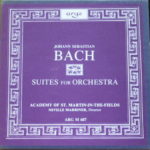 Bach Suites for Orchestra, 7.5ips - 4 Track Stereo
Bach Suites for Orchestra, 7.5ips - 4 Track Stereo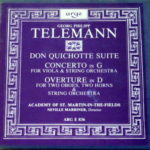 Telemann Don Quichotte Suite-, 7.5ips - 4 Track Stereo
Telemann Don Quichotte Suite-, 7.5ips - 4 Track Stereo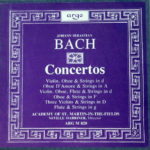 J.S Bach Bach 8 concertos for Violin, Oboe, Strings, Flute-, 7.5ips - 4 Track Stereo
J.S Bach Bach 8 concertos for Violin, Oboe, Strings, Flute-, 7.5ips - 4 Track Stereo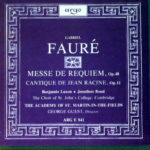 Faure Messe De Requiem, Cantique De Jean Racine, 7.5ips - 4 Track Stereo
Faure Messe De Requiem, Cantique De Jean Racine, 7.5ips - 4 Track Stereo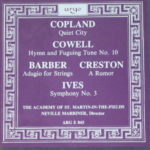 Copland Quiet City-, 7.5ips - 4 Track Stereo
Copland Quiet City-, 7.5ips - 4 Track Stereo Laudate Venetian Music by the Gabrielis & Bassano-, 7.5ips - 4 Track Stereo
Laudate Venetian Music by the Gabrielis & Bassano-, 7.5ips - 4 Track Stereo Mendelssohn Concerto in for two pianos & orchestra, Concerto in A Minor for Piano & Strings, 7.5ips - 4 Track Stereo
Mendelssohn Concerto in for two pianos & orchestra, Concerto in A Minor for Piano & Strings, 7.5ips - 4 Track Stereo- Vivaldi The Four Seasons, 7.5ips - 4 Track Stereo
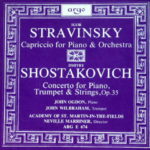 Stravinsky – Shostakovitch Capriccios, 7.5ips - 4 Track Stereo
Stravinsky – Shostakovitch Capriccios, 7.5ips - 4 Track Stereo- Mozart Ein Kleine Nachtmusik, Symphony #32 K.318, Simphonia Concertante for Violin & Viola K.364, 7.5ips - 4 Track Stereo
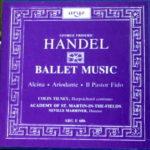 Handel Ballet Music (Alcina, Ariodante, Il Pastor Fido)-, 7.5ips - 4 Track Stereo
Handel Ballet Music (Alcina, Ariodante, Il Pastor Fido)-, 7.5ips - 4 Track Stereo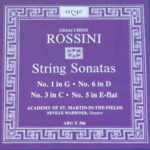 Rossini String Sonatas #1, 3, & 6, 7.5ips - 4 Track Stereo
Rossini String Sonatas #1, 3, & 6, 7.5ips - 4 Track Stereo- Mozart Divertimento in D Major, Notturno in D Major, 7.5ips - 4 Track Stereo
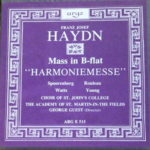 Haydn Mass in B Flat “Harmoniemesse”, 7.5ips - 4 Track Stereo
Haydn Mass in B Flat “Harmoniemesse”, 7.5ips - 4 Track Stereo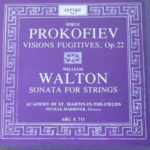 Walton Prokofiev Visions Fugitives, 7.5ips - 4 Track Stereo
Walton Prokofiev Visions Fugitives, 7.5ips - 4 Track Stereo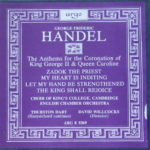 Handel Coronation Anthems-, 7.5ips - 4 Track Stereo
Handel Coronation Anthems-, 7.5ips - 4 Track Stereo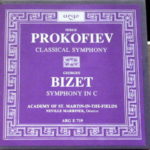 Prokofiev Symphony 1 – Bizet Symphony in C, 7.5ips - 4 Track Stereo
Prokofiev Symphony 1 – Bizet Symphony in C, 7.5ips - 4 Track Stereo- M. Haydn Horn Concerto, Six Minuets, 7.5ips - 4 Track Stereo
- Mozart Violin Concerto K.216 and Concertone K.190, 7.5ips - 4 Track Stereo
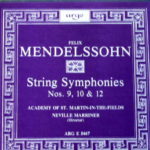 Mendelssohn String Symphonies # 9, 10 & 12, 7.5ips - 4 Track Stereo
Mendelssohn String Symphonies # 9, 10 & 12, 7.5ips - 4 Track Stereo- Mozart Three Divertimenti for Strings, Serenata Notturna in D, 7.5ips - 4 Track Stereo
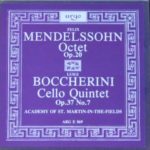 Mendelssohn Octet – Boccherini Cello Quintet, 7.5ips - 4 Track Stereo
Mendelssohn Octet – Boccherini Cello Quintet, 7.5ips - 4 Track Stereo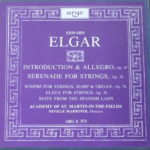 Edward Elgar Introduction & Allegro, Serenade for Strings, 7.5ips - 4 Track Stereo
Edward Elgar Introduction & Allegro, Serenade for Strings, 7.5ips - 4 Track Stereo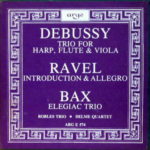 Debussy Trio – Bax Elegiac Trio, 7.5ips - 4 Track Stereo
Debussy Trio – Bax Elegiac Trio, 7.5ips - 4 Track Stereo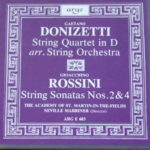 Donizetti String Quartet – Rossini String Sonatas, 7.5ips - 4 Track Stereo
Donizetti String Quartet – Rossini String Sonatas, 7.5ips - 4 Track Stereo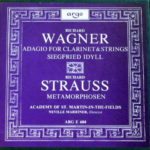 Wagner Siegfried – Strauss Metamorphosen, 7.5ips - 4 Track Stereo
Wagner Siegfried – Strauss Metamorphosen, 7.5ips - 4 Track Stereo
#50 Barclay Crocker Duplicated These Prerecorded TapesSubmit New Tape
4-Track Tapes
 Gabrielis & Bassano Venetian Music-, 7.5ips - 4 Track Stereo
Gabrielis & Bassano Venetian Music-, 7.5ips - 4 Track Stereo Copland Quiet City-, 7.5ips - 4 Track Stereo
Copland Quiet City-, 7.5ips - 4 Track Stereo Faure Messe De Requiem-, 7.5ips - 4 Track Stereo
Faure Messe De Requiem-, 7.5ips - 4 Track Stereo Vivaldi Concerti for Wind and Strings, 7.5ips - 4 Track Stereo
Vivaldi Concerti for Wind and Strings, 7.5ips - 4 Track Stereo Bach J.S Concertos-, 7.5ips - 4 Track Stereo
Bach J.S Concertos-, 7.5ips - 4 Track Stereo Vivaldi La Stravaganza, 7.5ips - 4 Track Stereo
Vivaldi La Stravaganza, 7.5ips - 4 Track Stereo Suk, Strauss, Janacek Serenade for Strings, Sextet from Capriccio, Suite for String Orch.-, 7.5ips - 4 Track Stereo
Suk, Strauss, Janacek Serenade for Strings, Sextet from Capriccio, Suite for String Orch.-, 7.5ips - 4 Track Stereo Various Christmas Music, 7.5ips - 4 Track Stereo
Various Christmas Music, 7.5ips - 4 Track Stereo Mozart Violin Concerto in G Major, Concertone in C Major for two Violins and Orchestra, 7.5ips - 4 Track Stereo
Mozart Violin Concerto in G Major, Concertone in C Major for two Violins and Orchestra, 7.5ips - 4 Track Stereo Mozart Divertimento in D Major, Notturno in D Major-, 7.5ips - 4 Track Stereo
Mozart Divertimento in D Major, Notturno in D Major-, 7.5ips - 4 Track Stereo Mozart Eine Kleine Nachtmusik,Sym.#32,Sinfonia Concertante for Violin & Viola-, 7.5ips - 4 Track Stereo
Mozart Eine Kleine Nachtmusik,Sym.#32,Sinfonia Concertante for Violin & Viola-, 7.5ips - 4 Track Stereo Bartok Divertmento for Strings, Music for Strings Percussion and Celeste-, 7.5ips - 4 Track Stereo
Bartok Divertmento for Strings, Music for Strings Percussion and Celeste-, 7.5ips - 4 Track Stereo Vivaldi The Four Seasons-, 7.5ips - 4 Track Stereo
Vivaldi The Four Seasons-, 7.5ips - 4 Track Stereo Mozart Three Divertimenti for Strings, 7.5ips - 4 Track Stereo
Mozart Three Divertimenti for Strings, 7.5ips - 4 Track Stereo Rossini String Sonatas -, 7.5ips - 4 Track Stereo
Rossini String Sonatas -, 7.5ips - 4 Track Stereo Haydn Trumpet and Horn Concertos , 7.5ips - 4 Track Stereo
Haydn Trumpet and Horn Concertos , 7.5ips - 4 Track Stereo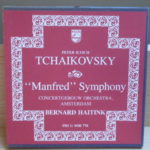 Tchaikovsky Manfred Symphony-, 7.5ips - 4 Track Stereo
Tchaikovsky Manfred Symphony-, 7.5ips - 4 Track Stereo George Gershwin Porgy & Bess-, 7.5ips - 4 Track Stereo
George Gershwin Porgy & Bess-, 7.5ips - 4 Track Stereo Gershwin Piano concerto in F, An American in Paris, Rhapsody in Blue-, 7.5ips - 4 Track Stereo
Gershwin Piano concerto in F, An American in Paris, Rhapsody in Blue-, 7.5ips - 4 Track Stereo Goldmark Rustic Wedding Symphony “Ländliche Hochzeit”, 7.5ips - 4 Track Stereo
Goldmark Rustic Wedding Symphony “Ländliche Hochzeit”, 7.5ips - 4 Track Stereo Vivaldi Virtuoso Trumpet-, 7.5ips - 4 Track Stereo
Vivaldi Virtuoso Trumpet-, 7.5ips - 4 Track Stereo Haydn Symphonies 70 & 59 “Fire Symphony”-, 7.5ips - 4 Track Stereo
Haydn Symphonies 70 & 59 “Fire Symphony”-, 7.5ips - 4 Track Stereo Mozart Four quartets for flute & strings-, 7.5ips - 4 Track Stereo
Mozart Four quartets for flute & strings-, 7.5ips - 4 Track Stereo Haydn Symphonies #90 & #91-, 7.5ips - 4 Track Stereo
Haydn Symphonies #90 & #91-, 7.5ips - 4 Track Stereo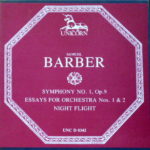 Samuel Barber Symphony #1, Essays for Orchestra #1-2, Night Flight, 7.5ips - 4 Track Stereo
Samuel Barber Symphony #1, Essays for Orchestra #1-2, Night Flight, 7.5ips - 4 Track Stereo Lehar & Strauss Merry Widow waltz, etc., 7.5ips - 4 Track Stereo
Lehar & Strauss Merry Widow waltz, etc., 7.5ips - 4 Track Stereo Dvorak Borodin String Quartet in D-, 7.5ips - 4 Track Stereo
Dvorak Borodin String Quartet in D-, 7.5ips - 4 Track Stereo The Scottish Bagpipe, 7.5ips - 4 Track Stereo
The Scottish Bagpipe, 7.5ips - 4 Track Stereo Mozart Serenades #11 & #12, 7.5ips - 4 Track Stereo
Mozart Serenades #11 & #12, 7.5ips - 4 Track Stereo Shostakovich String Quartets #8 and #15, 7.5ips - 4 Track Stereo
Shostakovich String Quartets #8 and #15, 7.5ips - 4 Track Stereo Vivaldi La Stravaganza, 7.5ips - 4 Track Stereo
Vivaldi La Stravaganza, 7.5ips - 4 Track Stereo Prokofiev Alexander Nevsky-, 7.5ips - 4 Track Stereo
Prokofiev Alexander Nevsky-, 7.5ips - 4 Track Stereo Bartok Divertimento for Strings, Music for Strings Percussion & Celeste-, 7.5ips - 4 Track Stereo
Bartok Divertimento for Strings, Music for Strings Percussion & Celeste-, 7.5ips - 4 Track Stereo Kurt Weill Symphonies #1 and #2, 7.5ips - 4 Track Stereo
Kurt Weill Symphonies #1 and #2, 7.5ips - 4 Track Stereo Vivaldi Concerti for Winds & Strings, 7.5ips - 4 Track Stereo
Vivaldi Concerti for Winds & Strings, 7.5ips - 4 Track Stereo William Boyce Symphonies #1-8, 7.5ips - 4 Track Stereo
William Boyce Symphonies #1-8, 7.5ips - 4 Track Stereo Danio The Play of Daniel-, 7.5ips - 4 Track Stereo
Danio The Play of Daniel-, 7.5ips - 4 Track Stereo Mozart Flute Concertos, 7.5ips - 4 Track Stereo
Mozart Flute Concertos, 7.5ips - 4 Track Stereo Hindemith Five Pieces Op. 44 No. 4-, 7.5ips - 4 Track Stereo
Hindemith Five Pieces Op. 44 No. 4-, 7.5ips - 4 Track Stereo J.S Bach Bach 8 concertos for Violin, Oboe, Strings, Flute-, 7.5ips - 4 Track Stereo
J.S Bach Bach 8 concertos for Violin, Oboe, Strings, Flute-, 7.5ips - 4 Track Stereo Suk Serenade for Strings-, 7.5ips - 4 Track Stereo
Suk Serenade for Strings-, 7.5ips - 4 Track Stereo Telemann Don Quichotte Suite-, 7.5ips - 4 Track Stereo
Telemann Don Quichotte Suite-, 7.5ips - 4 Track Stereo Faure Messe De Requiem, Cantique De Jean Racine, 7.5ips - 4 Track Stereo
Faure Messe De Requiem, Cantique De Jean Racine, 7.5ips - 4 Track Stereo Copland Quiet City-, 7.5ips - 4 Track Stereo
Copland Quiet City-, 7.5ips - 4 Track Stereo Laudate Venetian Music by the Gabrielis & Bassano-, 7.5ips - 4 Track Stereo
Laudate Venetian Music by the Gabrielis & Bassano-, 7.5ips - 4 Track Stereo Britten Variations on a theme of Frank Bridge-, 7.5ips - 4 Track Stereo
Britten Variations on a theme of Frank Bridge-, 7.5ips - 4 Track Stereo Delius The Walk To the Paradise Garden-, 7.5ips - 4 Track Stereo
Delius The Walk To the Paradise Garden-, 7.5ips - 4 Track Stereo Mozart Requiem Mass, 7.5ips - 4 Track Stereo
Mozart Requiem Mass, 7.5ips - 4 Track Stereo Poulenc Organ Concerto, Concert Champetre for Harpsichord & Orchestra, 7.5ips - 4 Track Stereo
Poulenc Organ Concerto, Concert Champetre for Harpsichord & Orchestra, 7.5ips - 4 Track Stereo Rossini String Sonatas #1, 3, & 6, 7.5ips - 4 Track Stereo
Rossini String Sonatas #1, 3, & 6, 7.5ips - 4 Track Stereo
